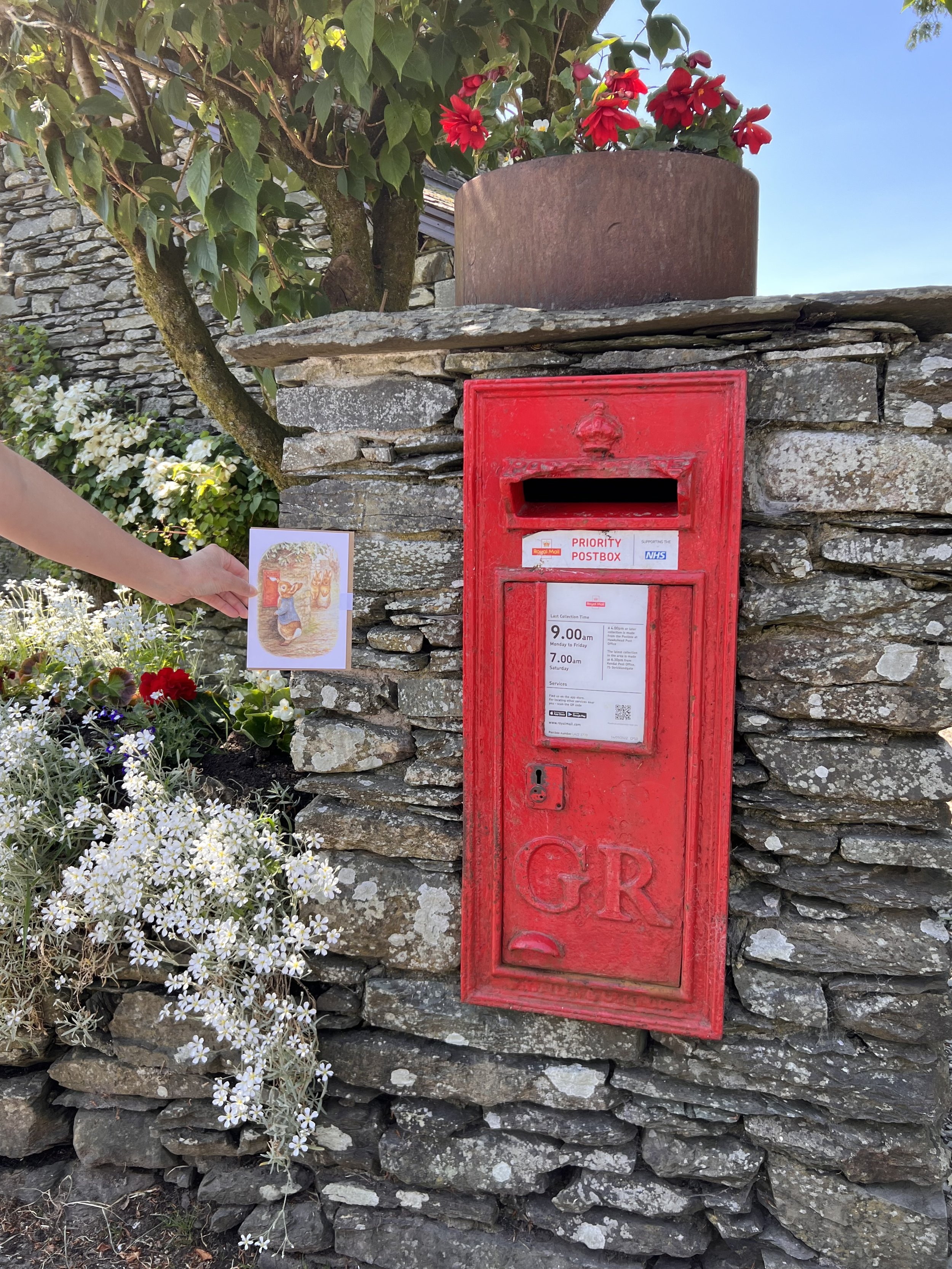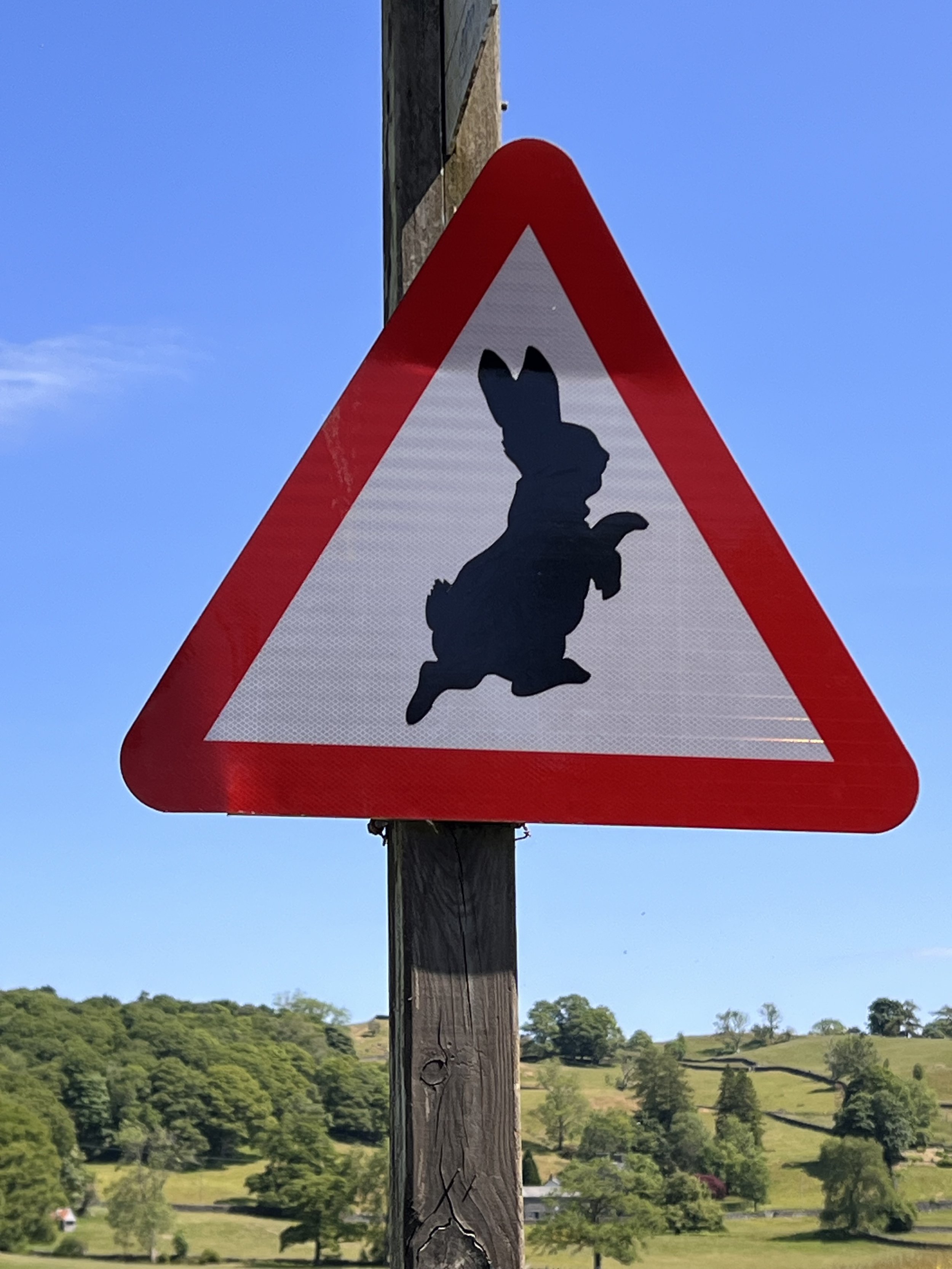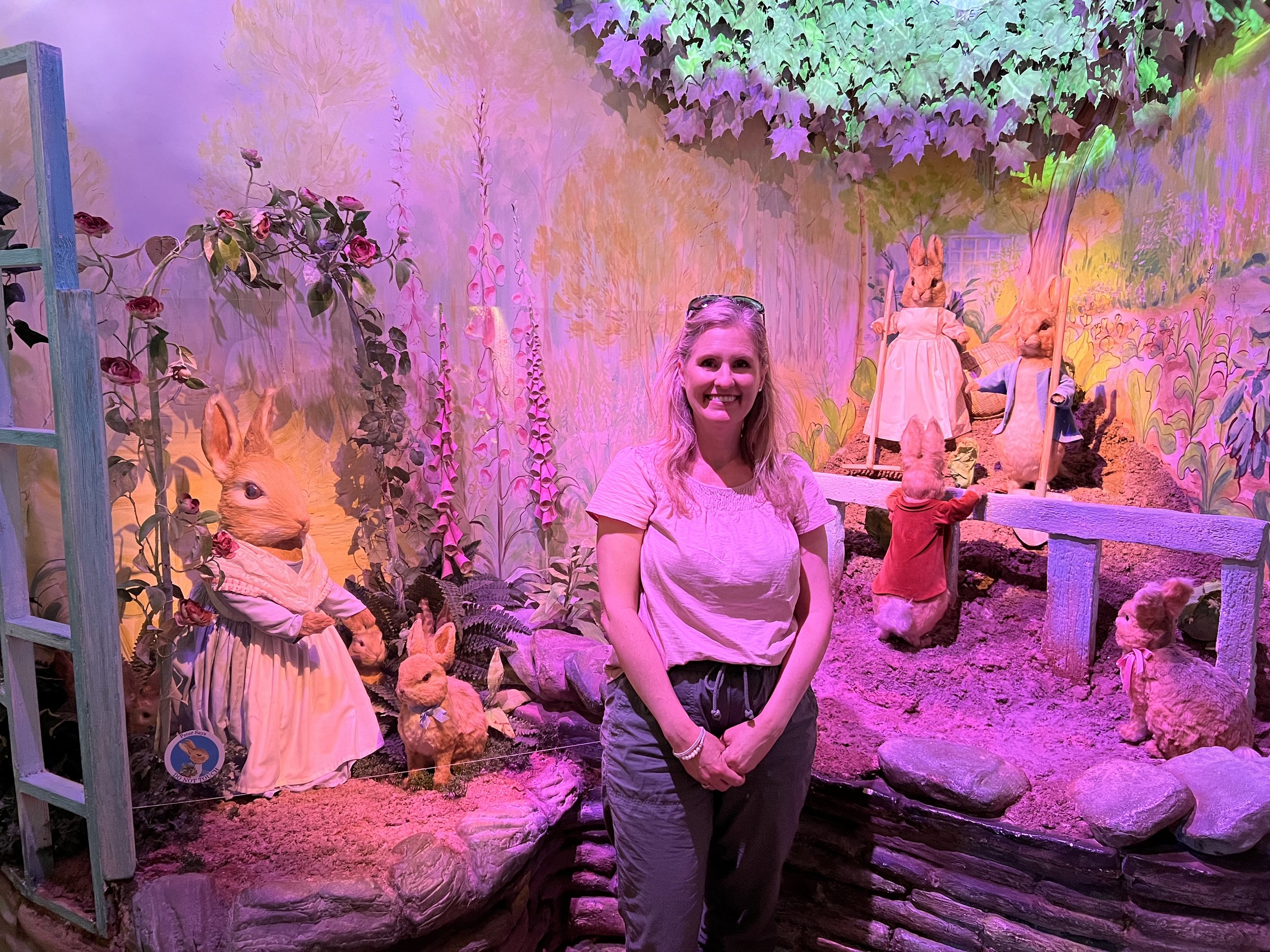Hill Top
“Once upon a time there were four little Rabbits, and their names were—Flopsy, Mopsy, Cottontail, and Peter.”
Hill Top
In the States every house is given a number.
In the UK many houses are given a name.
Hill Top is the name bestowed upon the farmhouse Beatrix Potter purchased in the tiny village of Near Sawrey, inside Lake District National Park.
Beatrix bought this working farm in 1905, shortly after the death of her fiancé and publisher Norman Warne. Beatrix found solace and inspiration at Hill Top.
By this time she was thirty-nine and already a well-known children’s author and illustrator. Beatrix had previously spent a good deal of time in the Lake District, vacationing with her parents, and she was very much inspired by the landscape.
Using the profits from her first illustrated books, she was able to purchase Hill Top and its surrounding land.
“It is a good, dry, sound old house.
It has stood a many hundred years.”
Like all hugely successful people, Beatrix Potter was an amalgamation of talent, good luck, and inspiration. She grew up in a well-to-do family and her father, a keen artist himself, encouraged Beatrix's creativity through drawing, painting, and photography.
While she had already produced great work by the time she bought Hill Top, the farm became a deep source of inspiration for further books.
She threw herself into renovations, creating a cottage garden surrounded by parkland, and extending the 17th-century farmhouse. Inside, she arranged antique furniture and family heirlooms.
Although she lived with her parents in London (it would have been scandalous for a single woman to live on her own), Beatrix visited Hill Top often—it was her rural retreat.
Over the next eight years, Beatrix's creativity flourished. She produced 13 books, many featuring Hill Top and Near Sawrey.
Beatrix Potter started to draw Hill Top as soon as she bought the farm. In her little books, Hill Top can be glimpsed through the eyes of an artist—as scenes for a storybook encountered page by page.
In the tales, Hill Top was home to Tom Kitten, his mother Tabitha Twitchit and his sisters Moppet and Mittens—plus the uninvited rats, Anna Maria and Samuel Whiskers.
In The Tale of Tom Kitten, the young cats make mischief in the old farmhouse and the garden, among the flower borders and moss-covered walls.
The Tale of Samuel Whiskers, published a year later, explored Hill Top's dark corners and hidden cupboards. Beatrix faithfully recorded the details of furniture and curtains, the textures of wooden panelling and slate floors, and dappled light through eighteenth-century glass.
Hill Top was built as a traditional Cumbrian farmhouse with three downstairs rooms. The main living space and kitchen (called the firehouse) is the room you enter here from the front door. Beatrix renamed this room The Hall.
Amanda stands in the same doorway as illustrated in The Tale of Samuel Whiskers.
The Hall is the oldest and coziest part of the farmhouse. Built in the late 1600s for a prospering farmer, the deep walls hide dark cupboards and a spiral staircase, making Hill Top, in Beatrix's words, “A beautiful house for playing hide & seek.”
Beatrix Potter was a passionate collector of Lake District furniture, and she could not resist a farm sale.
When Beatrix bought this dresser, it was infested with rats. Rather than being repulsed, the rats became inspiration to write The Tale of Samuel Whiskers.
Above, Amanda stands by the dresser that shows up in this illustration from The Tale of Samuel Whiskers.
"Oh! Mother, Mother," said Moppet, "there's been an old woman rat in the kitchen, and she's stolen some of the dough!"
Beatrix’s beautiful old grandfather clock.
“What heaven can be more real than to retain the spirit-world of childhood?”
This 1667 oak court cupboard came from an old farmhouse and was Beatrix's favorite piece. She once described it as “genuine and untouched—except by rats.”
This paperweight rests on top the cupboard; it became the inspiration for The Tale of Mr Jeremy Fisher.
The old farmhouse had a single bedroom off the firehouse (main living space/kitchen), which Beatrix remade into a parlour—the mahogany and marble creating a refined entertaining space.
“The little parlour is the room that is prettiest.”
-Beatrix Potter, 1929
As a teenager Beatrix fancied, “If I ever had a house I would have old furniture…It is not as expensive as modern furniture, and incomparably handsomer and better made.”
At the age of forty, she could fulfill those desires at Hill Top.
The original farmhouse only consisted of the small front portion of the house with two chimneys. The other parts were added later as extensions.
The cottage originally had a narrow spiral staircase that led up to storage lofts and sleeping quarters above. In the 18th century (before Beatrix owned it) an addition was made to the back of the house, which included this staircase.
In 1906, Beatrix Potter expanded Hill Top with further extensions at the side and back of the house. The new parts became accommodation for John and Sarah Cannon, Hill Top's tenant farmers.
“In the time of swords and periwigs and full-skirted coats with flowered lappets—when gentlemen wore ruffles, and gold-laced waistcoats of paduasoy and taffeta—there lived a tailor in Gloucester.”
In 1902, Beatrix borrowed some antique cups from the wife of the cobbler in Near Sawrey (the village where Hill Top is located), to paint for The Tailor of Gloucester. Decades later, in 1936, she purchased them at a sale, to display at Hill Top.
The charming earthenware pin dish may have come from her parents' London home, as the Potters collected Breton ceramics.
We have an affinity for The Tailor of Gloucester, having visited the shop in Gloucester that inspired some of the drawings for that book (see our post Ghosts of You from April 2).
Beatrix painted this early 1800s mahogany dressing mirror, a family heirloom, into the background of Tom Kitten's bedroom.
Beatrix decorated the Oak Room in the 1930s, embroidering the green bed hangings herself. Other personal touches evoked memories for Beatrix—an old family bible and her grandmother's chair.
In October 1913, Beatrix married William Heelis (1871-1945). The mantelpiece was later engraved.
The mantelpiece is inscribed: WHB 1934, which combines the couple's initials. It is said this was carved by William, to mark their 21st wedding anniversary. (The initials are inscribed on the left and the date on the right.)
At the top of the stairs—a familiar place…
In The Tale of Samuel Whiskers (1908), Tom Kitten is captured by rats who scamper up Hill Top’s staircase.
Beatrix Potter's garden was a great inspiration to her and it’s now been lovingly restored to how it looked in her time. Amanda is standing on the famous path that inspired the tales of Peter Rabbit.
Strawberry plants just blossoming in the garden.
In the orchard
Love the flowers
This white gate was once the original entrance to Hill Top.
(BTW, the new home she bought is the White House in the distance.)
The white gate appeared in this illustration from The Tale of Tom Kitten.
When Beatrix married local solicitor William Heels In 1913, she finally settled permanently in the Lakes. They outgrew Hill Top and purchased and moved to nearby Castle Cottage (the White House behind me). Over time, the couple worked together to buy and manage farms across the Lake District.
However, Beatrix kept Hill Top as a place to work, entertain guests, and display her collections. Hill Top remained a working farm during Beatrix’s lifetime, as it is today.
Beatrix had this gate installed at the back of Castle Cottage so she could slip across the meadow to Hill Top without having to walk through town.
The driveway to Castle Cottage. The National Trust now owns the cottage and leases it out (it was Beatrix’s wish that the house be lived in)—so you could live here if you want.
Beautiful roses
Beatrix dedicated the next 30 years to the conservation of the local landscape, buildings, and farming traditions.
We’re pretty sure the guy working on the wall while smoking his pipe is the long-term caretaker of Hill top.
The mail box in front of Hill Top.
The mailbox appeared in one of her illustrations with Peter Rabbit.
When Beatrix died, she left Hill Top to the National Trust, along with 15 farms and over 4,000 acres of land. May you have a thousand safe crossings Peter!
Windamere Ferry—Mallard
Hill Top is situated west of Windermere. Fortunately, the County operates a ferry that crosses mid-lake.
Since the lake is over 10 miles long and the roads are very narrow and winding along the western side, crossing on the ferry saved us gobs of time.
Here we are on Google Maps nearing the landing on the eastern shore.
The crossing cost £6 and only took a few minutes, so it was well worth a few minutes waiting for the ferry to arrive, and thus avoiding the massive drive around the lake.
The World of Beatrix Potter Attraction
On the eastern shore, a few minutes from the ferry is The World of Beatrice Potter Attraction.
“I have just made stories to please myself, because I never grew up.”
The target audience is probably young children, but they really have done a great job of bringing many of her characters to life.
“What we call the highest and the lowest in nature are both equally perfect. A willow bush is as beautiful as the human form divine.”
Her characters and their stories are both endearing and enduring.
From Alfred Wainwright and his brilliant hiking guides, to the evocative poetry of William Wordsworth’s, to Beatrix Potter and her imaginative characters—The Lake District is pure magical inspiration, and it’s deeply infectious!














































